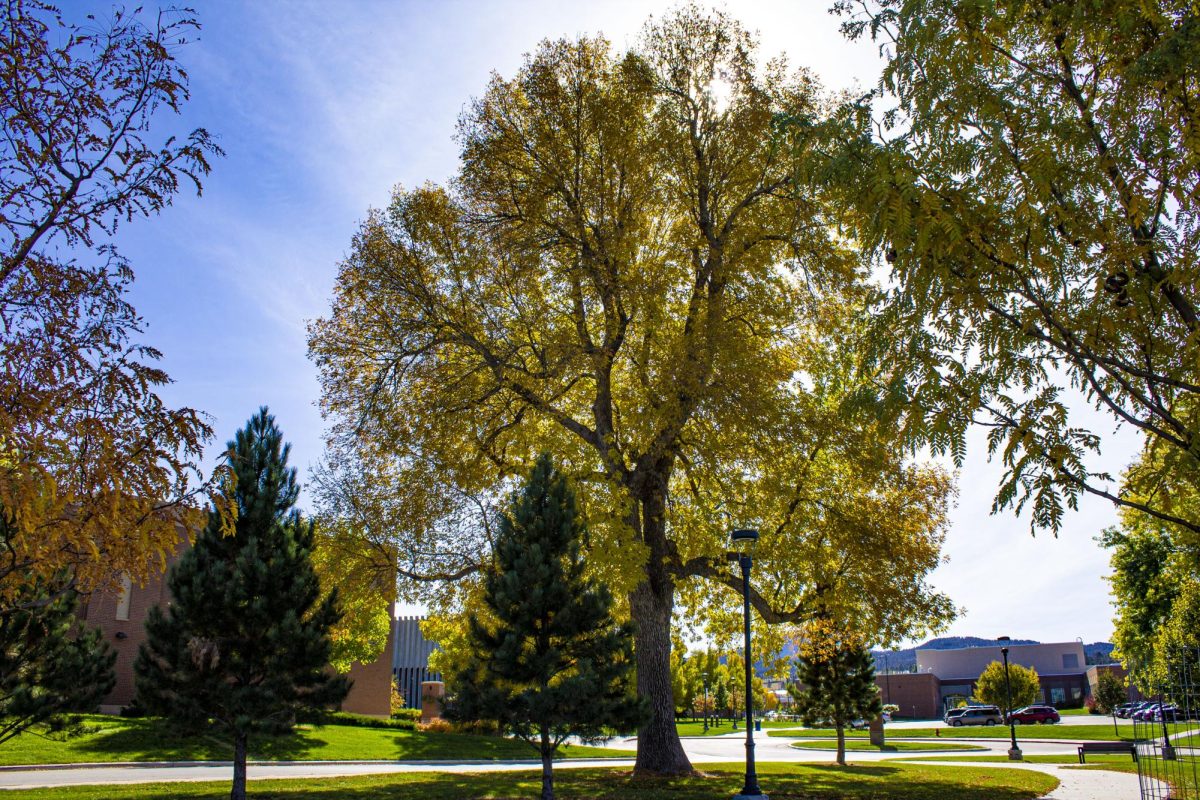As the emerald ash bore is making its way across America and wiping out ash trees by the millions, Spearfish is bound to be hit by this insect infestation. With such a predestined epidemic that will affect the Black Hills area, the Spearfish community and city are taking precautions to prepare for this situation.
The emerald ash bore is a non-native beetle that targets ash trees and kills the tree. “What it does is it hits ash trees. Not just green ash but white ash and other ashes,” said Dr. Tara Ramsey biology professor at Black Hills State University. “It burrows into the bark and gets into the vascular tissue which is the part that carries the food and water, and it kills the trees.”
This beetle was first spotted in 2002 in Michigan destroying the ash tree population. It was introduced to America through international shipping from Asian countries.
“There is a lot of international shipping that goes through the port in Detroit, and the problem there was since they didn’t know about it [emerald ash bore] they didn’t figure out about the bug for about 10 years and [it] wiped out millions of ash trees in Michigan,” said Rex McDonald Recreation & Forestry Superintendent.
Due to it being non-native, it went unnoticed until it was too late.
“By the time they figured it out that it was a non-native insect that was targeting ash trees, at that point it had already spread, and people didn’t have treatments for it,” said McDonald. “It has now been around for about 20 years in this country.”
This infestation has now hit over 30 states and has been identified in Sioux Falls, SD. “Last I checked it was confirmed in 34 different states,” said McDonald.
With a consistent spread, it is bound to reach Spearfish. “The question is not if it gets here, but when,” said McDonald. “Mostly [found] East of the Mississippi River, it was detected in South Dakota in 2018 in the Sioux Falls Area. Now, it is in a few different counties on the eastern side of the state.”
Since this is a reality for the Spearfish trees, there are precautions and plans that are set for when this beetle hits West River communities.
One of the first steps is limiting firewood that is allowed into campgrounds.
“We are pretty sure it will get here through firewood,” said Dr. Ramsey. “Because people hall firewood from infected areas, they can easily hop off and get into ash trees.”
Since Spearfish is heavily filled with green ash trees, it is important to not repeat the Dutch Elms disease which wiped out elm trees. This epidemic surfaced in the 1970s which destroyed the elms population. Since ash trees are fast-growing trees, they replaced the elms which is now an issue due to the large population of ash trees.
To prevent this situation of history repeating itself, Spearfish City is select-cutting ash trees and replacing them with a variety of tree species. “What we are doing proactively is starting to manage our ash tree population by select removals of ash trees,” said McDonald. “Approximately 10% of our ash tree population per year ahead of emerald ash bore getting here. That way it lessens the amount of work, and the cost that emerald ash bore is going to have if we have less ash trees.”
Even the BHSU campus is preparing to take precautions and invest in the trees that are on campus.
“We are taking down some of the low-quality trees,” said Eric Hanson Grounds Crew Leader. “Anytime there is a tree that is somewhat declining health it seems to attract more bugs…it can’t fight off those bugs with its own natural defenses.”
Even the small details are impacting the trees on campus to benefit them in fighting off dangers.
“We are trying to keep what trees we do have as healthy as possible,” said Hanson. “Making sure they get adequate water they get regular trimming, pruning, and some maintenance.”
There are three trees that are being protected from the emerald ash bore that are going to be invested in.
“We got three big ash trees on campus that are that are high-quality trees,” said Hanson. “Those trees I think are worth saving because of their size and I am guessing around 80-year-old trees and maybe even older.
The plan for these trees is to inject the trees with an insecticide that kills the emerald ash bore.
“It is like giving the tree an IV where they drill these holes and stick the needles in. There is a little bag of pesticide and trees do transportation where they suck up liquid…and they suck up the pesticide,” said Dr. Ramsey. “Then what it does is it gets into the vascular system and gets into the leaves and if the ash bore bites it, they die.”
With the precautions and analyzing what to do to prevent ash trees from being wiped out, the Spearfish community is adequately planned and ready for when the emerald ash bore hits this area.



